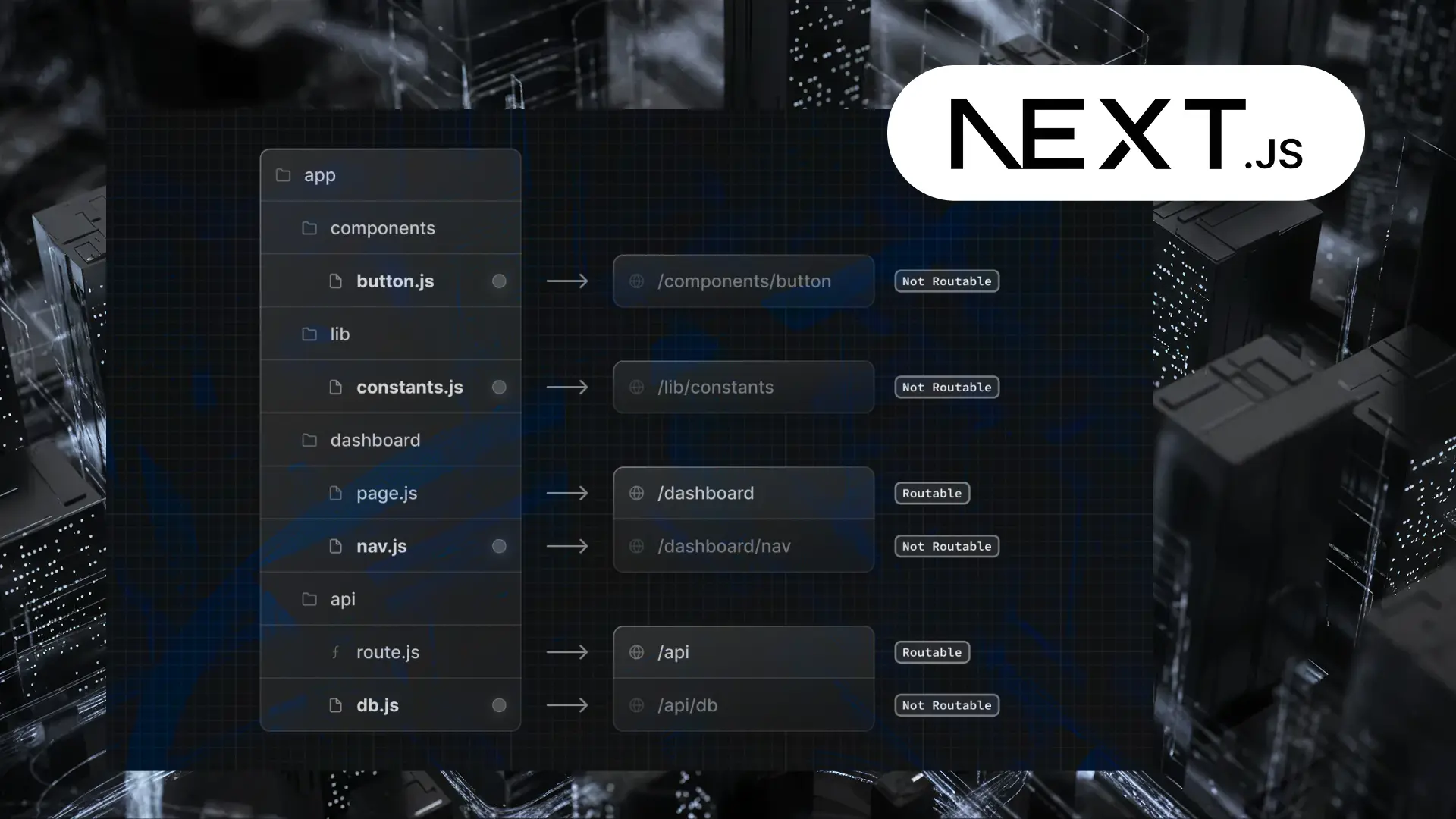How AI-Powered Kitchen Display Systems Improve Restaurant Efficiency
Author

Subject Matter Expert


Date

Book a call
Key Takeaways:
- AI-powered Kitchen display system optimizes prep time, balances workloads, and improves order accuracy in real-time.
- Successful implementation requires POS compatibility, pilot testing, and staff onboarding.
- GeekyAnts delivers custom KDS solutions tailored to your kitchen’s unique flow and scale.
A misfired ticket in a packed kitchen can cost more than a meal—it can cost a customer. Amid sizzling pans and ticking clocks, restaurant kitchens run on precision; a single miscommunication or delayed order can trigger a domino effect: longer wait times, frustrated staff, unhappy guests, and, eventually, lost revenue.
According to a report by the National Restaurant Association, nearly 60% of restaurant operators in the U.S. cite kitchen delays and communication breakdowns as the top contributors to poor customer experiences. And with rising labor costs, staff shortages, and post-pandemic pressure to streamline operations, the margin for error has shrunk even further.
Now, the industry is turning to a smarter solution: AI-powered Kitchen Display Systems (KDS).
Once considered a back-of-house upgrade, modern KDS solutions are now becoming the nerve center of restaurant operations, replacing traditional paper tickets and siloed point-of-sale (POS) handoffs with real-time dashboards, predictive intelligence, and adaptive task routing. Unlike conventional displays, AI-enhanced KDS platforms go beyond simple order visualisation—they balance workloads, forecast prep times, and flag inefficiencies before they become bottlenecks.
Across the United States, tech-savvy restaurant chains and mid-sized operators alike are deploying these systems to bring clarity to chaos. As platforms like Loman and Eatos highlight, AI-integrated KDS is no longer a futuristic concept—it’s a strategic move to increase throughput, reduce errors, and lighten the load on already stretched kitchen staff.
This blog covers what AI-powered KDS is, its benefits, implementation, challenges, and why GeekyAnts is the right tech partner.
Whether you are a restaurant owner battling labour gaps or an operations lead seeking consistency during rush hours, this blog will show you why AI in the kitchen isn’t a luxury—it’s a necessity.

Source: National Restaurant Association
What Is an AI-Powered Kitchen Display System (KDS)?
At its core, a Kitchen Display System (KDS) is a digital screen that replaces traditional paper tickets or verbal handoffs in restaurant kitchens. It syncs with the point-of-sale (POS) system to display incoming orders in real-time, helping chefs and line cooks track what needs to be prepared, when, and in what sequence. In essence, it’s a command center for kitchen workflow.
However, not all KDS are created equal.
Traditional vs. AI-Enhanced KDS
While traditional systems function as static dashboards that simply display tickets in order of receipt, AI-powered KDS platforms go several steps further. They transform kitchen operations from reactive to predictive.
Here’s a snapshot comparison:
Capability | Traditional KDS | AI-Powered KDS |
Order Management | Displays orders in sequence; lacks task prioritization | Dynamically sequences tasks based on urgency, prep time, and staff workload |
Data Analysis | No data insights; operates on real-time input only | Continuously analyzes prep times, staff capacity, and historical trends to guide decisions |
Automation | Manual reordering and intervention are required | Fully automated routing, prioritization, and workload balancing across stations |
Real-Time Optimization | Static display; unable to respond to changing kitchen conditions | Actively adjusts task flow based on live inputs like station backlog or unexpected surges |
Predictive Performance | Lacks forecasting; cannot anticipate rushes or delays | Predicts demand spikes, prep delays, and recommends adjustments before bottlenecks occur |
Workload Distribution | Tasks are assigned uniformly or manually | Load is balanced dynamically based on real-time kitchen throughput and staff availability |
Hardware Dependence | Often tied to fixed, proprietary hardware setups | Works across multiple platforms—POS-integrated, cloud-based, and mobile-compatible |
Learning Capability | No learning curve; behaves the same every day | Learns from past performance and adapts over time for smarter, faster execution |
AI-powered KDS platforms do more than display orders—they analyze, prioritize, and adapt in real time. By factoring in prep times, station load, and rush hour patterns, they dynamically sequence tasks to keep operations smooth and efficient. If one station is overloaded, the system redistributes tasks to avoid bottlenecks.
Over time, these systems learn from historical data—such as prep durations and common delays—to continuously optimize kitchen performance.

Kunal Kumar
COO, GeekyAnts
How AI-Powered KDS Improves Operational Efficiency
At GeekyAnts, we have worked closely with restaurant clients across the U.S. to modernize their kitchen operations—and one truth stands out: a kitchen’s efficiency is no longer defined by hustle alone, but by how intelligently it runs. From delayed orders during lunch-hour rushes to staff burnout from unbalanced workloads, we have seen firsthand how operational bottlenecks erode margins and morale. AI-powered Kitchen Display Systems (KDS) are changing that narrative.
Unlike traditional systems that passively display orders, AI-enhanced KDS platforms actively manage the kitchen environment—from sequencing and timing to staff coordination and decision-making. Here's how the shift plays out in real kitchens.

Real-Time Task Sequencing Improves Speed and Flow
A multi-location QSR chain based in Texas struggled with inconsistent order timings during dinner rush. Their existing KDS displayed orders in the order received, often overloading the grill station while leaving the prep station idle.
With AI-powered KDS, tasks are dynamically reordered based on prep time, dish complexity, and kitchen traffic. Long-prep items are queued early, and simultaneous dishes are timed to finish together. The result was a 21% reduction in total order prep time within the first three weeks of deployment.
Smart Load Balancing Protects Staff and Boosts Output
In many kitchens, the workload is not distributed evenly, resulting in burnout, errors, or delays. AI-powered KDS mitigates this by analyzing station-level load in real time. If the sauté line is overwhelmed, the system can reroute simpler items to a less busy cold prep station, keeping service smooth and staff pace sustainable.
This approach helped a mid-sized bistro in Chicago reduce staff overtime by 18% and improve order accuracy during peak hours without increasing headcount.
Predictive Intelligence Reduces Mistakes and Anticipates Bottlenecks
Traditional systems respond; AI-powered systems anticipate. By learning from historical data—such as prep times, late orders, or recurring delay patterns—the system begins to forecast when a station will fall behind and adjusts sequencing or alerts staff before service breaks down.
Restaurants using predictive KDS report up to 30% fewer kitchen errors, thanks to better timing, fewer missed items, and automated alerts for delays or duplicate tickets.
Seamless FOH-BOH Coordination Increases Table Turns
Efficient kitchens do not just cook faster—they serve faster. By syncing with POS systems and providing real-time status updates, AI-KDS empowers front-of-house teams to give accurate wait times, adjust pacing, and manage expectations. That means fewer miscommunications and faster table turnovers.
A restaurant group we supported in California reported a 16% increase in table turns on weekends within the first month, without any changes to staffing or kitchen size.

Kunal Kumar
COO, GeekyAnts
These results are not theoretical. Across diverse formats—from fast-casual to fine dining—AI-powered KDS has delivered measurable gains in speed, consistency, and staff efficiency. In a restaurant industry where margins are thin and expectations are high, that kind of control can be the difference between falling behind and scaling up.
Implementation Guide for AI-Powered KDS
Implementing an AI-powered Kitchen Display System is not a plug-and-play solution—it’s a strategic upgrade that requires planning, system alignment, and operational buy-in. Based on our experience working with restaurant brands across formats, here’s a step-by-step guide to successfully adopt an AI-KDS in your kitchen environment.

1. Assess Your Kitchen Workflows
Begin with a thorough examination of how your kitchen operates today. Map out your service patterns, average ticket volumes, order complexity, and station-level responsibilities. Understanding these pain points—such as prep delays or uneven workloads—will help tailor the KDS configuration to your environment.
For example, a quick-service restaurant (QSR) with high volume and tight prep windows will need different sequencing logic than a full-service bistro with complex, multi-course orders.
2. Select the Right Technology Partner
Not all kitchen display system platforms are created equal, especially when AI is involved. Look for vendors who offer:
- Customizable workflows
- Real-time reporting and analytics
- Open integration with POS and other systems
- Mobile or tablet-friendly options
More importantly, evaluate whether the vendor’s AI logic is trainable and adaptable, not just rule-based.
3. Ensure POS Compatibility
The KDS must integrate seamlessly with your point-of-sale (POS) system. This ensures real-time order syncing, reduces manual entry errors, and enables full visibility from front-of-house to back-of-house. Confirm API compatibility early in the process and test for data stability across platforms.
4. Run a Pilot Program
Before going full-scale, run a pilot in a single location or on a single prep station. Use this period to observe how the AI handles task sequencing, load balancing, and real-time adjustments. Gather feedback from chefs, line cooks, and service staff.
In one case, a mid-sized restaurant group we worked with tested the system during weekend dinner hours, resulting in a 19% drop in prep delays within the first two weeks.
5. Train and Onboard Staff
Introducing AI does not eliminate the need for human alignment. Provide hands-on training so staff understand not just the interface, but also how the system is making decisions. This transparency builds trust and ensures consistent adoption across shifts.
Include sessions on:
- Reading and interpreting KDS instructions
- Responding to real-time alerts or reordering
- Managing exceptions and override logic
6. Monitor, Measure, and Iterate
Once deployed, track key performance indicators such as:
- Average ticket time
- Order accuracy rates
- Staff workload balance
- Customer satisfaction (via wait time or feedback)
Use these metrics to fine-tune the system’s logic, adjust prep station configurations, and evolve as service patterns shift.
A well-implemented AI-powered KDS does not enhance only how orders are displayed—it transforms how kitchens operate. With the right groundwork and continuous improvement, restaurants can unlock measurable gains in throughput, accuracy, and staff efficiency.
Challenges and How to Overcome
Adopting AI-powered Kitchen Display Systems (KDS) may seem like a silver bullet for operational chaos, but even the best technology can stumble without proper planning. Based on our experience building AI-led restaurant tools, here are the five most common challenges restaurants face during adoption—and how to solve them before they become bottlenecks.

1. Staff Resistance to Change
The Challenge:
Many kitchen staff—especially experienced chefs and line workers—may resist AI-based systems, fearing complexity or job disruption.
The Solution:
Involve the staff early. Choose a system with a clean, intuitive interface and conduct hands-on pilot training before rollout. Reframe the KDS as a support tool, not a replacement. Highlight how it reduces stress and prevents order pile-ups rather than monitoring performance.
2. Integration with Existing POS Systems
The Challenge:
Legacy POS systems might not support real-time data syncing with newer AI-powered KDS platforms, creating delays or mismatches in orders.
The Solution:
Select KDS tools built with open API compatibility. Run backend sandbox tests to validate full integration before the go-live. A phased integration—starting with less critical meal periods—helps spot misfires early without disrupting peak hours.
3. High Initial Setup Cost or Vendor Lock-in
The Challenge:
AI-based systems often come bundled with costly hardware or long-term vendor contracts, making ROI a concern, especially for mid-sized or family-run establishments.
The Solution:
Avoid systems that require proprietary hardware. Instead, choose cloud-based, modular platforms that scale with business growth. Open-source options or custom-built tools from tech partners (like GeekyAnts) can help lower costs and prevent lock-ins.
4. Data Overload Without Insights
The Challenge:
Collecting real-time data is one thing; turning it into usable insights is another. Many restaurants find themselves overwhelmed by dashboards they don’t know how to use.
The Solution:
Pick systems that visualize actionable KPIs—like average prep time, station delays, or peak-hour throughput. Implement weekly analytics reviews to fine-tune operations, not just collect data.
5. Unclear Success Metrics
The Challenge:
Without clear goals, even a successful KDS implementation may go undervalued, especially by non-technical stakeholders.
The Solution:
Define ROI early: reduced ticket times, fewer remakes, faster table turns, or happier staff. Track metrics consistently for the first 30–60 days and use that data to refine both system logic and team workflows.
Real-World Case Studies of AI-Powered Kitchen Display Systems
While the promise of AI in restaurant kitchens sounds futuristic, its real-world impact is already transforming operations across the United States. Here are three compelling case studies that showcase how AI-powered Kitchen Display Systems (KDS) are solving age-old problems with modern precision.
Case Study 1: QuickBite Grill, Texas – Reducing Order Errors by 45%
The Problem:
QuickBite Grill, a popular fast-casual chain in Austin, was facing a growing number of customer complaints related to incorrect or delayed orders, especially during weekend rush hours. Manual ticketing and paper-based processes couldn’t keep pace with growing demand.
The Solution:
The restaurant integrated an AI-powered KDS that analyzed real-time prep loads and routed orders based on kitchen station capacity. The system flagged high-volume times, redistributed tasks automatically, and ensured front-of-house (FOH) and back-of-house (BOH) coordination.
The Result:
Within the first 60 days, the chain saw a 45% reduction in order errors and a 25% improvement in ticket-to-table time. Staff burnout also dropped due to improved workload balancing.
Case Study 2: Shoreline Diner, Florida – Improving Throughput by 30%
The Problem:
Shoreline Diner in Miami struggled with peak-hour bottlenecks, especially when managing dine-in, takeout, and delivery channels simultaneously. Traditional KDS screens displayed orders but lacked prioritization logic.
The Solution:
An AI-enabled KDS was introduced, with features like predictive wait time calculation and smart sequencing based on order complexity. Lighter meals were routed to faster stations, while complex dishes were spaced out to avoid prep collisions.
The Result:
Order throughput increased by 30%, and customer satisfaction scores rose by 18% in post-meal surveys. The owner also reported faster staff onboarding due to the intuitive UI of the system.
Case Study 3: Family-Run Bistro, Illinois – Boosting Staff Efficiency with Smart Load Balancing
The Problem:
A family-run bistro in Chicago had limited kitchen staff and was heavily dependent on manual coordination. During staff shortages, delays and mistakes became common, affecting revenue.
The Solution:
A lightweight, AI-powered KDS with smart load balancing and historical prep data analysis was deployed. The system adjusted ticket routing in real time and even suggested optimal cooking sequences during lean shifts.
The Result:
Despite having fewer hands on deck, the bistro maintained a steady 95% on-time delivery rate and reduced kitchen stress during weekend hours. Management was also able to make smarter staffing decisions based on system data.
Why GeekyAnts Is the Right Partner for AI-Powered KDS Solutions
Built for Your Kitchen Logic—Not a Generic Template
At GeekyAnts, we don’t retrofit solutions—we co-build them. Our kitchen display system solutions adapt to your kitchen’s unique flow, station layout, menu complexity, and device constraints. Whether it's cloud-first, tablet-ready, or POS-integrated, we tailor every layer.
From POS to Plate: Full-Stack Expertise
We’ve engineered restaurant tech across the stack—custom POS systems, live order dashboards, and real-time kitchen ops platforms. Our systems sync seamlessly with ordering apps, payment gateways, and inventory modules.
Data That Thinks Ahead
Every AI layer we build—workload distribution, prep time prediction, station bottleneck alerts—is designed for speed, accuracy, and uptime. Our solutions run on a modern stack with real-time data streaming, edge processing, and ML-powered optimization.
Real Impact, Real Kitchens
We have helped:
- Build live kitchen dashboards for cloud kitchens in NYC
- Create tablet-based KDS for QSRs with smart routing logic
- Integrate multi-channel orders into a single AI-controlled display system
We Build to Scale and Adapt
With 19+ years in engineering and a track record across restaurant, retail, and logistics tech, GeekyAnts delivers systems that evolve with your business—not around it.
Let’s build a KDS that works the way your kitchen works.
Conclusion: Operational Precision Starts with AI
AI-powered Kitchen Display Systems aren’t incremental upgrades—they are foundational to modern kitchen performance. By turning static order screens into real-time decision engines, these systems resolve core inefficiencies: unbalanced workloads, delayed prep, inaccurate ETAs, and inconsistent service during peak hours.
For operators under pressure to deliver speed without sacrificing accuracy, AI-KDS platforms provide measurable gains in throughput, staff efficiency, and order reliability. The result is not a marginal improvement—it’s a structural shift in how kitchens execute at scale.
For restaurants serious about operational performance, AI-KDS is not the future. It’s the new baseline.
FAQs
1. How does an AI-powered KDS reduce kitchen wait times and errors?
2. Can AI-based kitchen display systems work with my existing POS software?
- Real-time data syncing
- Menu mapping and order structure
- Transaction flow alignment
3. Are AI-powered KDS systems suitable for small or mid-sized restaurants?
4. What kind of ROI can restaurants expect after implementing AI KDS?
- A 15–30% increase in prep speed
- Up to 45% fewer errors or remakes
- Improved customer satisfaction and table turnover
5. Do AI-powered KDS systems require special staff training?
6. What are the maintenance or upgrade requirements for AI-based KDS?
7. How does an AI KDS handle high-volume rush hours or unexpected spikes in orders?
Dive deep into our research and insights. In our articles and blogs, we explore topics on design, how it relates to development, and impact of various trends to businesses.





